TWIN FALLS (Day 4 - part 3)
Our first stop in Twin Falls was the visitor center.




The Historic Perrine Stagecoach
In the early 1880s, this Concord Coach served as a mail wagon and passenger coach. Runs were made as far as Nevada. It took up to 6 horses to pull the fully loaded stagecoach up the steep grade out of the canyon. At some point, it was purchased by I.B. Perrine, a rancher who dreamed of turning this sagebrush desert into lush agricultural lands. He would take investors around the region, showing them his vision of what would one day become one of the largest irrigated farming tracts in North America. Motorized transportation brought the coach's work to an end by about 1916. It was left to rot in the overgrowth of Perrine's old homestead. Luckily in 1982, it was purchased and underwent a 16-year-long restoration.
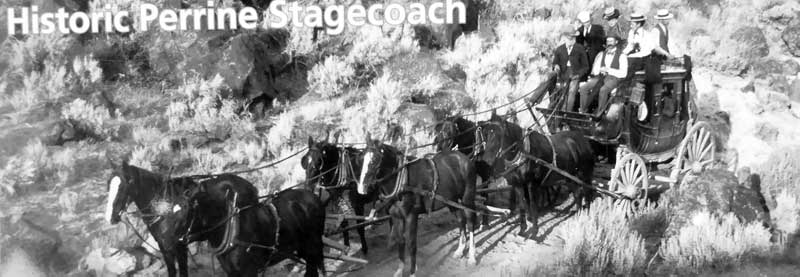

The Snake River Canyon was sculpted by the Bonneville Flood. 17,400 years ago, Lake Bonneville once covered much of southern Idaho and northern Utah. At its peak, it covered nearly 20,000 square miles and was over 1,000 feet deep. Around 15,000 years ago, during the last ice age, the lake broke through one of its natural boundaries. Flood waters (200 to 600 feet deep) ripped through this area (this canyon already existed but was much smaller) at speeds of up to 70 miles per hour, creating such features as Shoshone Falls. The lake drained through the Snake River to the Columbia River, and eventually into the Pacific Ocean. The Great Salt Lake is all that is left of it.


Ira Burton Perrine (1861-1943), an early Twin Falls settler and developer. His vision, planning and dedication led to Twin Falls' growth from a desert outpost to a flourishing city.

The Snake River
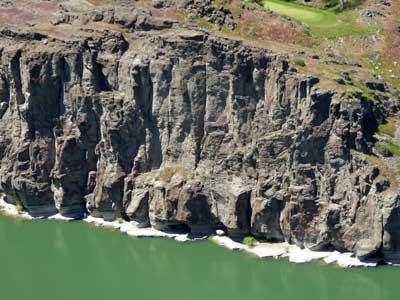







The Perrine Memorial Bridge was completed in 1976. It is 1,500 feet long and some 480 feet above the river.

The old bridge was built in 1927 as a toll bridge, and purchased by the State of Idaho in 1940.
As we walked under the bridge, I noticed an odd, dark spot in the water. I then realized it was a shadow from a paraglider! They were jumping off the bridge and landing far below.

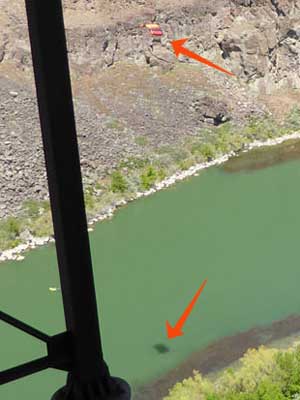

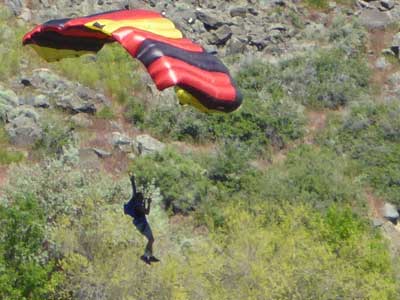

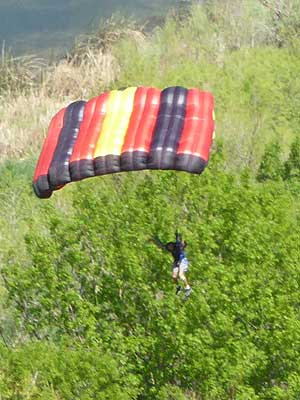


A safe landing


Another jump...


Apparently the sail opens as they fall!


Another brave soul prepares to jump.


Two miles upstream was the old earthen ramp used by motorcycle daredevil Evel Knievel (aka Robert Craig Knievel) in 1974. He attempted the quarter-mile-wide jump on a steam-powered rocket (the Skycycle X-2) but his parachute malfunctioned and opened right away instead of at the end of the jump. He floated to the canyon floor and survived with only a broken nose. Had he hit the water, he would have drowned.
We returned the visitor center. It seemed all the paragliders made it and were packing up their gear.
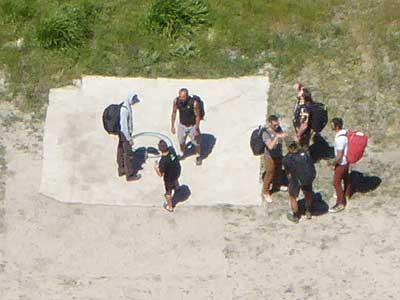

return • continue

